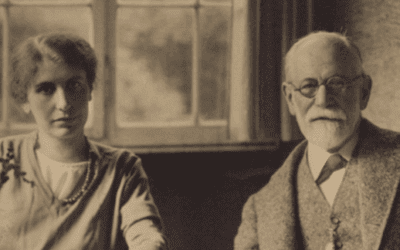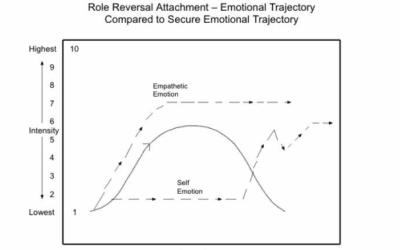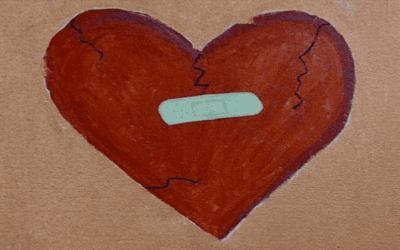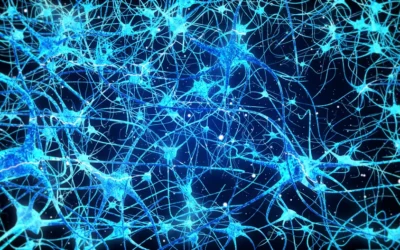
Can You Use EMDR on Children?
Childhood and adolescence are crucial periods of development, laying the foundation for mental health and well-being throughout the lifespan. However, for many young people in Alabama, these formative years are marked by traumatic experiences, adverse life events, and unresolved emotional wounds that can have lasting impacts on their sense of self, relationships, and ability to thrive.
If you’re a parent, caregiver, or mental health professional seeking effective treatments for children and teens struggling with trauma, anxiety, depression, or behavioral issues, you may have heard of Eye Movement Desensitization and Reprocessing (EMDR) therapy. This evidence-based approach has gained widespread recognition for its ability to help individuals of all ages process and heal from distressing memories and experiences.
In this article, we’ll take an in-depth look at what EMDR is, how it works, and why it can be particularly beneficial for children and adolescents. We’ll also explore the specific ways EMDR is being used to support the mental health needs of young people in Alabama, and how you can access this transformative treatment for your child or teen.
You can see Pamela Hayes for EMDR anywhere in Alabama.
What is EMDR Therapy?
EMDR is a psychotherapy approach developed by Dr. Francine Shapiro in the late 1980s to help individuals process traumatic memories and alleviate symptoms of post-traumatic stress disorder (PTSD). Since then, it has been extensively researched and applied to a wide range of mental health conditions beyond PTSD, including anxiety, depression, phobias, grief, and attachment disorders.
At its core, EMDR is based on the understanding that when a person experiences a distressing or traumatic event, the memory of that event can become “stuck” or improperly stored in the brain, leading to ongoing psychological and physiological symptoms. Unlike other forms of talk therapy that focus primarily on changing thoughts and behaviors, EMDR aims to directly access and reprocess these maladaptive memories, allowing the brain to heal itself naturally.
The EMDR process involves eight phases, which can be summarized as follows:
- History-taking and treatment planning: The therapist gathers information about the client’s history, current symptoms, and goals for therapy. They work together to identify specific memories or experiences to target in EMDR processing.
- Preparation: The therapist helps the client develop coping skills and resources to manage any distress that may arise during processing. This may include relaxation techniques, safe place visualization, or other grounding exercises.
- Assessment: For each target memory, the therapist guides the client to identify the key images, beliefs, emotions, and body sensations associated with that memory. They also help the client identify a desired positive belief to replace the negative one.
- Desensitization: While the client focuses on the target memory, the therapist facilitates bilateral stimulation of the brain, usually through eye movements, tapping, or audio tones. This dual attention allows the brain to access and process the memory in an adaptive way.
- Installation: The therapist guides the client to strengthen the connection between the reprocessed memory and the desired positive belief, until it feels completely true.
- Body scan: The client is asked to hold the target memory in mind and notice any residual tension or discomfort in the body. If any is present, additional processing may be done.
- Closure: The therapist helps the client return to a state of equilibrium and stability, regardless of whether the memory was fully processed in that session. They may teach the client self-calming techniques to use between sessions.
- Re-evaluation: At the start of each new session, the therapist checks in on the client’s progress and determines whether additional processing is needed for previously targeted memories or if new targets should be selected.
One of the unique features of EMDR is that it does not require the client to talk about their traumatic experiences in detail, which can be especially beneficial for children and teens who may struggle to verbalize their memories or emotions. Instead, the processing happens more rapidly and often with less retraumatization than other exposure-based therapies.
Research has consistently shown EMDR to be effective in reducing symptoms of PTSD, anxiety, and depression, often in fewer sessions than traditional talk therapy. The World Health Organization and the American Psychiatric Association have endorsed EMDR as a frontline treatment for trauma.
How EMDR Can Help Children and Teens in Alabama Childhood trauma is a pervasive issue in Alabama, with many young people exposed to adverse experiences like abuse, neglect, domestic violence, community violence, poverty, and discrimination. According to the ACE (Adverse Childhood Experiences) Coalition of West Alabama, 47% of Alabama adults report having experienced at least two ACEs in childhood.
Unresolved trauma can manifest in a variety of ways in children and teens, including:
- Anxiety and fearfulness
- Depression and low self-esteem
- Anger and aggression
- Difficulty regulating emotions
- Attention and concentration problems
- Sleep disturbances and nightmares
- Somatic complaints like headaches or stomachaches
- Self-harming or suicidal behaviors
- Substance abuse and high-risk behaviors
- Relationship and attachment difficulties
For many young people, these symptoms are misunderstood or misdiagnosed, leading to ineffective or even harmful interventions. EMDR offers a targeted, non-invasive way to address the root causes of these issues by helping children and teens process traumatic memories and develop more adaptive coping skills.
EMDR has been successfully used with children as young as four years old, with modifications to suit their developmental stage and attention span. For example, a therapist may use puppets, play, or storytelling to help a young child access and process memories. With teens, the therapist may incorporate art, music, or writing to facilitate processing.
Some of the specific benefits of EMDR for children and teens include:
- Rapid symptom relief: EMDR often works more quickly than traditional talk therapy, with some clients experiencing significant improvements in just a few sessions. This can be especially important for children who may struggle to engage in long-term treatment.
- Non-verbal processing: Many children and teens have difficulty putting their traumatic experiences into words. EMDR allows them to process memories and emotions without having to discuss all the details, which can feel safer and less overwhelming.
- Improved self-esteem and self-efficacy: As children and teens are able to process and make sense of their experiences, they often develop a greater sense of self-compassion and empowerment. They learn that they are not defined by what happened to them and that they have the resources to cope with distress.
- Enhanced emotional regulation: EMDR helps children and teens develop better skills for managing intense emotions, reducing impulsivity and reactivity. They learn to notice and tolerate uncomfortable sensations in the body without becoming overwhelmed.
- Improved relationships and attachment: By processing attachment wounds and relational traumas, EMDR can help children and teens develop healthier, more secure ways of relating to others. They may feel more trusting, assertive, and able to set appropriate boundaries.
- Integration of adaptive information: EMDR not only helps to desensitize distressing memories, but also to install more positive, adaptive beliefs and self-perceptions. Children and teens can internalize messages of safety, worthiness, and capability.
Accessing EMDR in Alabama If you’re interested in exploring EMDR for your child or teen, there are several ways to access this treatment in Alabama. Many mental health professionals, including psychologists, counselors, social workers, and marriage and family therapists, are trained in EMDR and offer it as part of their services.
One good place to start your search is the EMDR International Association (EMDRIA) directory at https://www.emdria.org/directory/, where you can search for certified EMDR therapists by location and specialty. You can also try searching for “EMDR therapy for children/teens in Alabama” or asking for referrals from your child’s pediatrician, school counselor, or other trusted providers.
When selecting an EMDR therapist for your child or teen, it’s important to consider factors such as:
- Training and certification in EMDR
- Experience working with children and/or adolescents
- Understanding of developmental trauma and attachment issues
- Ability to create a safe, supportive therapeutic relationship
- Flexibility to adapt the EMDR protocol to your child’s unique needs and preferences
- Willingness to collaborate with other providers and support systems in your child’s life
Many EMDR therapists offer free consultation calls to help you determine if they are a good fit for your family. Don’t hesitate to ask questions and trust your instincts about who your child feels most comfortable with.
It’s also worth noting that in response to the COVID-19 pandemic, many EMDR therapists are now offering teletherapy services, allowing children and teens to access this treatment from the comfort and safety of their own homes. Teletherapy has been shown to be just as effective as in-person EMDR in many cases, and may be a more convenient and accessible option for some families.
If cost is a barrier, you may be able to find low-cost or sliding-scale EMDR services through community mental health centers, nonprofit organizations, or university training clinics. Some therapists also accept Medicaid or other insurance plans that cover mental health treatment for children.
Childhood and adolescence are not only times of great challenge and vulnerability, but also of tremendous resilience and possibility. By providing young people with the tools and support to process traumatic experiences, regulate their emotions, and develop healthy relationships, we can help them unlock their innate potential and thrive in the face of adversity.
EMDR therapy offers a powerful, evidence-based approach to healing trauma and promoting mental health in children and teens. By directly targeting the root of distressing memories and beliefs, EMDR can create rapid, lasting changes in symptoms, self-perception, and overall functioning.
If your child or teen is struggling with the impacts of trauma or other emotional challenges, know that they are not alone and that effective help is available. By connecting with a qualified EMDR therapist in Alabama, you can give your child the gift of a brighter, more resilient future. With the right support and their own inner wisdom, they can learn to navigate life’s challenges with greater ease, confidence, and joy.
You can see Pamela Hayes for EMDR anywhere in Alabama.
Bibliography:
- Shapiro, F. (2017). Eye movement desensitization and reprocessing (EMDR) therapy: Basic principles, protocols, and procedures (3rd ed.). New York, NY: Guilford Press.
- Adler-Tapia, R., & Settle, C. (2016). EMDR and the art of psychotherapy with children: Infants to adolescents treatment manual (2nd ed.). New York, NY: Springer Publishing Company.
- Gomez, A. M. (2018). EMDR therapy and adjunct approaches with children: Complex trauma, attachment, and dissociation. New York, NY: Springer Publishing Company.
- Wesselmann, D., Armstrong, S., Schweitzer, C., & Davidson, M. (2014). An integrative EMDR and family therapy model for treating attachment trauma in children: A case study. Journal of EMDR Practice and Research, 8(3), 119-128.
- Rodenburg, R., Benjamin, A., de Roos, C., Meijer, A. M., & Stams, G. J. (2009). Efficacy of EMDR in children: A meta-analysis. Clinical Psychology Review, 29(7), 599-606.
- The ACE (Adverse Childhood Experiences) Coalition of West Alabama. (2021). ACEs in Alabama. Retrieved from https://www.acecoalitionofalabama.org/aces-in-alabama
- World Health Organization. (2013). Guidelines for the management of conditions specifically related to stress. Geneva, Switzerland: Author.
- American Psychiatric Association. (2017). Clinical practice guideline for the treatment of PTSD. Washington, DC: Author.
- EMDR International Association. (2021). What is EMDR therapy? Retrieved from https://www.emdria.org/about-emdr-therapy/
- Felitti, V. J., Anda, R. F., Nordenberg, D., Williamson, D. F., Spitz, A. M., Edwards, V., … & Marks, J. S. (1998). Relationship of childhood abuse and household dysfunction to many of the leading causes of death in adults: The Adverse Childhood Experiences (ACE) Study. American journal of preventive medicine, 14(4), 245-258.

























0 Comments